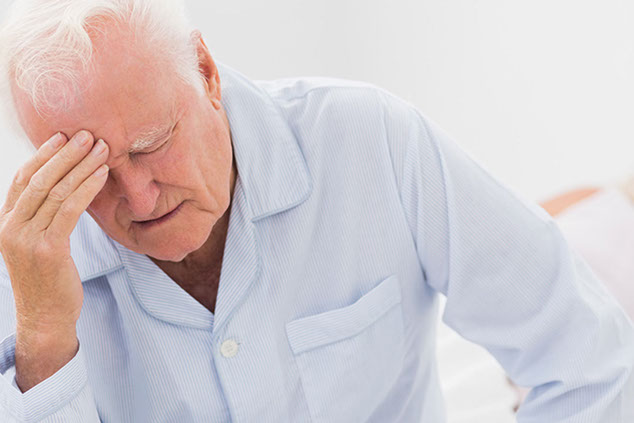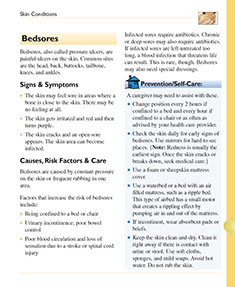CONDITIONS
SYMPTOM CHECKER
Male
Female
Child
Arm, Hand & Shoulder Concerns
Legs & Feet Concerns
Dental & Mouth Concerns
Ear & Nose
Eye Conditions
Head Conditions
Arm, Hand & Shoulder Concerns
Legs & Feet Concerns
Front
Back
Arm, Hand & Shoulder Concerns
Dental & Mouth Concerns
Ear & Nose
Eye Conditions
Head Conditions
Arm, Hand & Shoulder Concerns
Dental & Mouth Concerns
Ear & Nose
Eye Conditions
Head Conditions
Front
Back
Arm, Hand & Shoulder Concerns
Neck Links
Head & Neck Concerns
Arm, Hand & Shoulder Concerns
Neck Links
Head & Neck Concerns
Front
Back
Online Clinic
Wise Healthcare
Bedsores
Bedsores, also called pressure ulcers, are painful ulcers on the skin. Common sites are the head, back, buttocks, tailbone, knees, and ankles.
Signs & Symptoms
• The skin may feel sore in areas where a bone is close to the skin. There may be no feeling at all.
• The skin gets irritated and red and then turns purple.
• The skin cracks and an open sore appears. The skin area can become infected.
Causes & Risk Factors
Bedsores are caused by constant pressure on the skin or frequent rubbing in one area. Factors that increase the risk of bedsores include:
• Being confined to a bed or chair
• Urinary incontinence; poor bowel control
• Poor blood circulation and loss of sensation due to a stroke or spinal cord injury
Infected sores require antibiotics. Chronic or deep sores may also require antibiotics. If infected sores are left untreated too long, a blood infection that threatens life can result. This is rare, though. Bedsores may also need special dressings.
Self-Care / Prevention
A caregiver may need to assist with these.
• Change position every 2 hours if confined to a bed and every hour if confined to a chair or as often as advised by your health care provider.
• Check the skin daily for early signs of bedsores. Use mirrors for hard to see places. {Note: Redness is usually the earliest sign. Once the skin cracks or breaks down, seek medical care.}
• Use a foam or sheepskin mattress cover.
• Use a waterbed or a bed with an air filled mattress, such as a ripple bed. This type of airbed has a small motor that creates a rippling effect by pumping air in and out of the mattress.
• If incontinent, wear absorbent pads or briefs.
• Keep the skin clean and dry. Clean it right away if there is contact with urine or stool. Use soft cloths, sponges, and mild soaps. Avoid hot water. Do not rub the skin.
• Apply cornstarch to the skin.
• Lift (do not drag or slide) an immobile person.
• Don’t sit on donut-shaped cushions.
• Put pillows between knees and ankles so they don’t touch.
• Use sheepskin under heels and buttocks.
• Don’t massage bony body parts.
• Eat well and get adequate fluids.
• Ask your doctor about taking a vitamin C supplement.
• Handle a person with bedsores gently.
• Apply topical medication, as advised.
When to Seek Medical Care
Contact Doctor When:
• The skin is cracked.
• Sores show signs of infection (fever; redness; pain; heat; pus; swelling).
• Sores have not improved after 2 weeks of self-care.
This website is not meant to substitute for expert medical advice or treatment. Follow your doctor’s or health care provider’s advice if it differs from what is given in this guide.
The American Institute for Preventive Medicine (AIPM) is not responsible for the availability or content of external sites, nor does AIPM endorse them. Also, it is the responsibility of the user to examine the copyright and licensing restrictions of external pages and to secure all necessary permission.
The content on this website is proprietary. You may not modify, copy, reproduce, republish, upload, post, transmit, or distribute, in any manner, the material on the website without the written permission of AIPM.
2021 © American Institute for Preventive Medicine - All Rights Reserved. Disclaimer | www.HealthyLife.com
















































